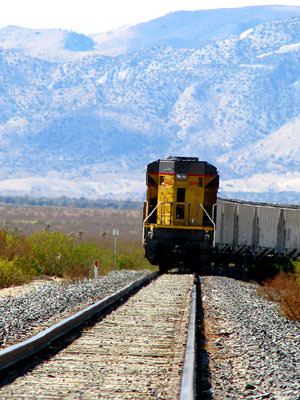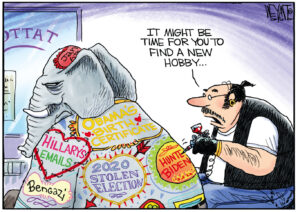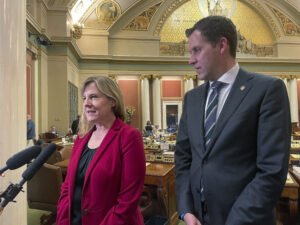This Common-Sense Solution Brought to You by the 19th Century
Barack Obama wants to spend as much as a trillion dollars on the nation's infrastructure, from roads to bridges. A video on his transition Web site even touts the economic advantages of fixing potholes. Why so car-centric? A new article in the Washington Monthly claims that spending some of that money on rail lines instead of roads could pay dividends.
Barack Obama wants to spend as much as a trillion dollars on the nation’s infrastructure, from roads to bridges. A video on his transition Web site (embedded below) even touts the economic advantages of fixing potholes. Why so car-centric? A new article in the Washington Monthly claims that spending some of that money on rail lines instead of roads could pay dividends.
Of course Obama’s vision extends far beyond the automobile, but it would be worth considering a broad range of suggestions as we prepare to make investments that will stay with us for decades to come.
Your support matters…Washington Monthly:
The railroad has long been reluctant to accept government investment in its infrastructure out of fear of public meddling, such as being compelled to run money-losing passenger trains. But now, like most of the industry, it has changed its mind, and it happily accepted Virginia’s offer last year to fund a small portion—$40 million—of the investment needed to get more freight traffic off I-81 and onto the Crescent Corridor. The railroad estimates that with an additional $2 billion in infrastructure investment, it could divert a million trucks off the road, which is currently carrying just under five million. State officials are thinking even bigger: a study sponsored by the Virginia DOT finds that a cumulative investment over ten to twelve years of less than $8 billion would divert 30 percent of the growing truck traffic on I-81 to rail. That would be far more bang for the state’s buck than the $11 billion it would take to add more lanes to the highway, especially since it would bring many other public benefits, from reduced highway accidents and lower repair costs to enormous improvements in fuel efficiency and pollution reduction. Today, a single train can move as many containers as 280 trucks while using one-third as much energy—and that’s before any improvements to rail infrastructure.
Independent journalism is under threat and overshadowed by heavily funded mainstream media.
You can help level the playing field. Become a member.
Your tax-deductible contribution keeps us digging beneath the headlines to give you thought-provoking, investigative reporting and analysis that unearths what's really happening- without compromise.
Give today to support our courageous, independent journalists.






You need to be a supporter to comment.
There are currently no responses to this article.
Be the first to respond.